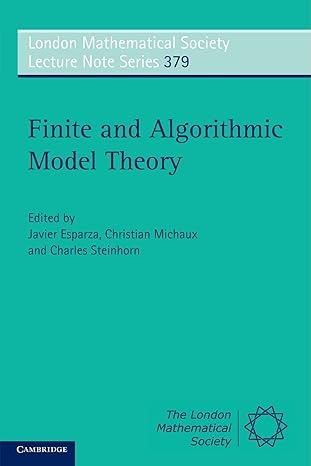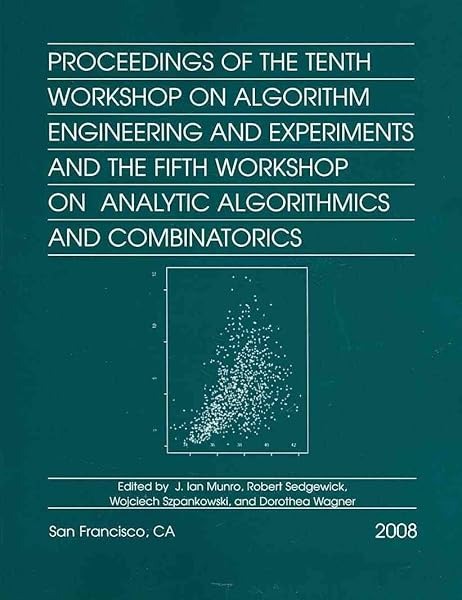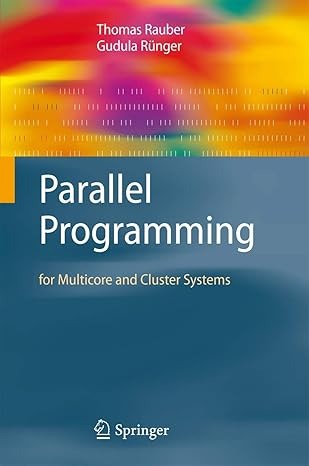Categories
Tags
Finite and Algorithmic Model Theory (London Mathematical Society Lecture Note Series, Vol. 379)

Intended for researchers and graduate students in theoretical computer science and mathematical logic, this volume contains accessible surveys by leading researchers from areas of current work in logical aspects of computer science, where both finite and infinite model-theoretic methods play an important role. Notably, the articles in this collection emphasize points of contact and connections between finite and infinite model theory in computer science that may suggest new directions for interaction. Among the topics discussed are: algorithmic model theory, descriptive complexity theory, finite model theory, finite variable logic, model checking, model theory for restricted classes of finite structures, and spatial databases. The chapters all include extensive bibliographies facilitating deeper exploration of the literature and further research.
- minimomy
- Today, 03:00
- 0
Proceedings of the Tenth Workshop on Algorithm Engineering and Experiments and the Fifth Workshop on Analytic Algorithmics and Combinatorics (Proceedings in Applied Mathematics)

The annual Workshop on Algorithm Engineering and Experiments (ALENEX) provides a forum for the presentation of original research in all aspects of algorithm engineering, including the implementation and experimental evaluation of algorithms and data structures. The workshop was sponsored by SIAM, the Society for Industrial and Applied Mathematics, and SIGACT, the ACM Special Interest Group on Algorithms and Computation Theory. The aim of ANALCO is to provide a forum for the presentation of original research in the analysis of algorithms and associated combinatorial structures.
- minimomy
- Today, 02:44
- 0
Ashampoo Music Studio v12.0.0.14 Final Portable

Ashampoo Music Studio 12 – gives you better results with fewer clicks! Especially in the demanding areas of CD ripping and audio recording, you can expect significant improvements. Enjoy significantly improved CD recognition with intelligent metadata merging, automatic detection of music stream titles, intelligent burning functions including automatic mute control, and a redesigned recording list with sorting options.
- minimomy
- Yesterday, 21:26
- 0
DaVinci Resolve Studio v20.0.1 Build 6 Portable

DaVinci Resolve Studio 20 is the world's first 8K-ready software that enables professional-level video editing, color correction, audio mixing, and visual effects. Instantly jump between pages with just one click. DaVinci Resolve Studio is also the only app with collaborative tools so editors, colorists, VFX artists, and sound designers can work together on the same project.
- minimomy
- Yesterday, 16:24
- 0
Elegant Black Foiling Leather PSD Mockup Template

Elegant Black Foiling Leather PSD Mockup Template
Photoshop PSD | 45 MB
- GFX_Muawia2
- Yesterday, 14:49
- 0
Stamp Photoshop Effect for Text & Logo

Stamp Photoshop Effect for Text & Logo
Photoshop PSD | 35 MB
- GFX_Muawia2
- Yesterday, 14:43
- 0
Parallel Programming: for Multicore and Cluster Systems

Innovations in hardware architecture, like hyper-threading or multicore processors, mean that parallel computing resources are available for inexpensive desktop computers. In only a few years, many standard software products will be based on concepts of parallel programming implemented on such hardware, and the range of applications will be much broader than that of scientific computing, up to now the main application area for parallel computing. Rauber and Rünger take up these recent developments in processor architecture by giving detailed descriptions of parallel programming techniques that are necessary for developing efficient programs for multicore processors as well as for parallel cluster systems and supercomputers.
- minimomy
- Yesterday, 08:28
- 0
Katie Proctor – Brand Bootcamp Live 2025 Download

Free Download Katie Proctor – Brand Bootcamp Live 2025
Build a Magnetic Brand That Attracts, Connects, and Converts
Katie Proctor – Brand Bootcamp Live 2025 is an intensive, high-energy workshop designed to help entrepreneurs, coaches, and creatives build powerful personal and business brands from the ground up. Whether you're launching a new brand or refreshing an existing one, this course delivers everything you need — from brand clarity to visual identity and messaging.
Katie walks you through her proven brand-building framework so you can stand out online, connect deeply with your audience, and build trust that drives sales.
Category: Video Courses / Branding & Business Strategy
Download Katie Proctor – Brand Bootcamp Live 2025 and discover how to build a clear, compelling, and profitable brand that stands out in a crowded market.
- BestRelease
- Yesterday, 05:11
- 0
Hrabren Lindfors – Instagram Content Creation Dojo Download

Free Download Hrabren Lindfors – Instagram Content Creation Dojo with High-Speed Links
Master the Art of High-Impact Instagram Content Creation
Hrabren Lindfors – Instagram Content Creation Dojo is a complete training program for content creators, influencers, and marketers who want to dominate Instagram with scroll-stopping posts, reels, and carousels. This course delivers actionable strategies, content formulas, and creative frameworks to grow your audience and boost engagement — without burning out.
Whether you're starting from scratch or looking to take your Instagram game to the next level, this course equips you with the tools to produce viral content consistently.
Category: Video Courses / Social Media & Content Marketing
Download Dickie Bush and Nicholas Cole – Ghostwriter GPT and learn how to write high-quality content at scale using AI tools and pro-level ghostwriting strategies.
- BestRelease
- Yesterday, 05:04
- 0
Dickie Bush and Nicholas Cole – Ghostwriter GPT Download

Free Download Dickie Bush and Nicholas Cole – Ghostwriter GPT
Learn How to Use AI to Write Like a 7-Figure Ghostwriter
Dickie Bush and Nicholas Cole – Ghostwriter GPT is a groundbreaking course that teaches you how to combine human creativity with the power of AI to write content at scale — with elite quality. Whether you're a freelancer, content creator, or entrepreneur, this course shows you how to use GPT technology like a professional ghostwriter.
Dickie and Nicholas break down their exact workflows, templates, and prompts to help you create thought-leadership content, social media posts, long-form articles, and more — all with speed, clarity, and impact.
Category: Video Courses / AI Writing & Content Creation
Download Dickie Bush and Nicholas Cole – Ghostwriter GPT and learn how to write high-quality content at scale using AI tools and pro-level ghostwriting strategies.
- BestRelease
- Yesterday, 04:58
- 0